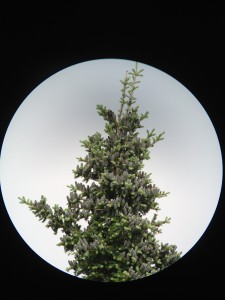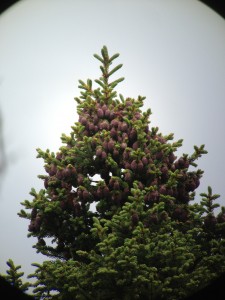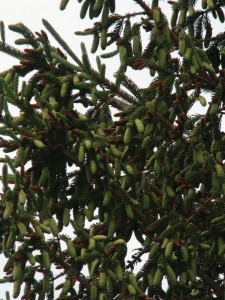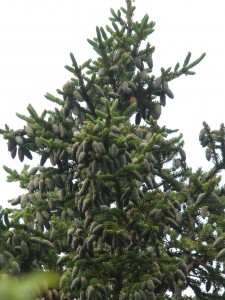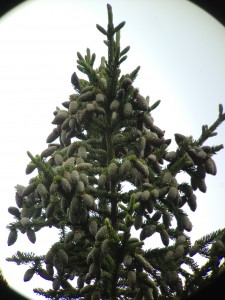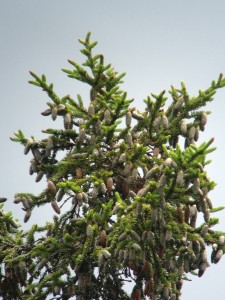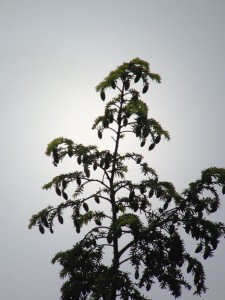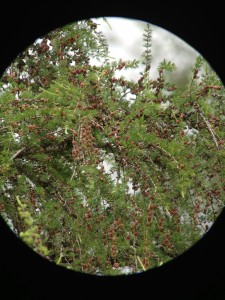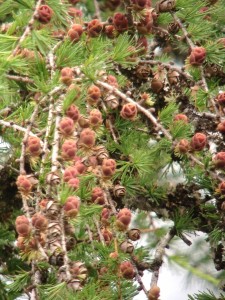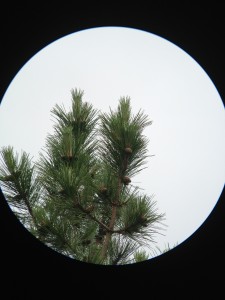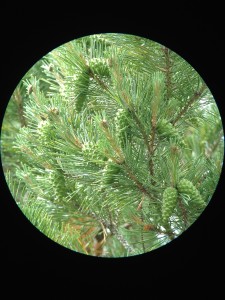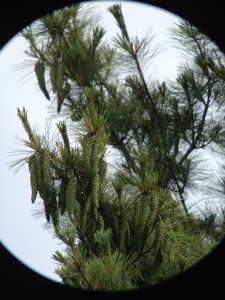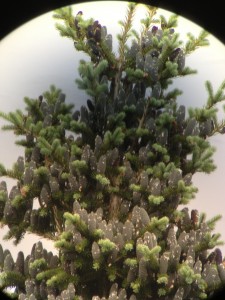
Cones provide food for many animals, including winter finches. Watching this developing food source across the northeastern U.S. and Canada can help us predict winter movements (irruptions) of certain species, particularly winter finches. If the cone crops are poor to our north, while our cone crops are good, then we can expect finch species to move into our area for the winter. Last winter (2012-2013), was a poor year for our area, and finches moved far to the south – with reports from as far away as Georgia! Crossbills filled Long Island and Central Park in NYC! Our resident Evening Grosbeaks, which form large flocks in our town during winter (I usually have over a hundred feeder birds) completely left the Adirondacks last winter.
Now that I have the iPhone-Kowa scope adapter, I have been able to take close-up photographs of this year’s cone crops. All spruce species (Black, Red, White, Norway), Balsam Fir, and White Pine look excellent! Tamarack and Eastern Hemlock look good. I have not yet been able to photograph White Cedar. Red Pine appears to have some maturing cones – tough to photograph this species. Scotch Pine has many new cones this year.
Here are the photos (if you click twice on each photo, you can view a larger image):
